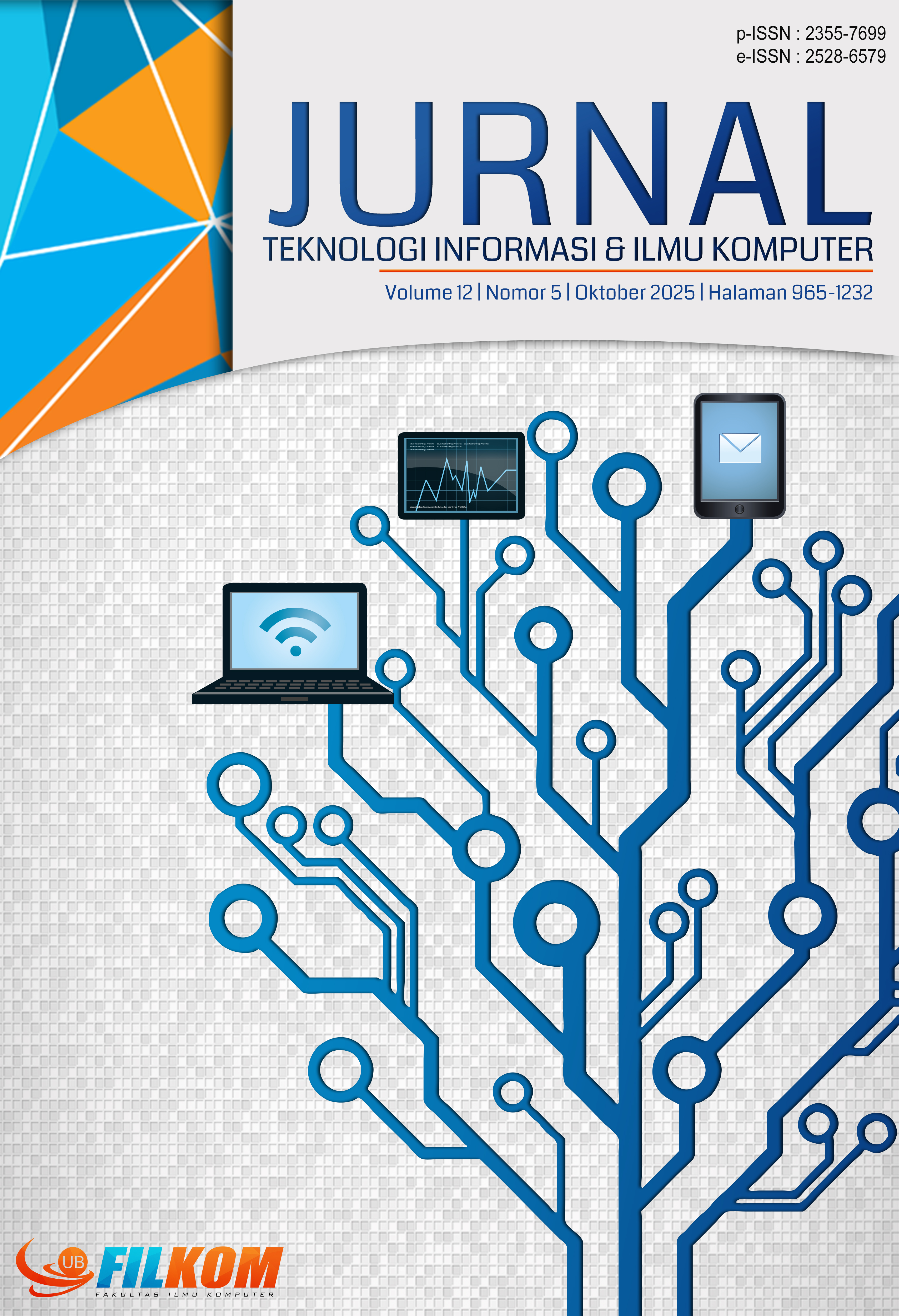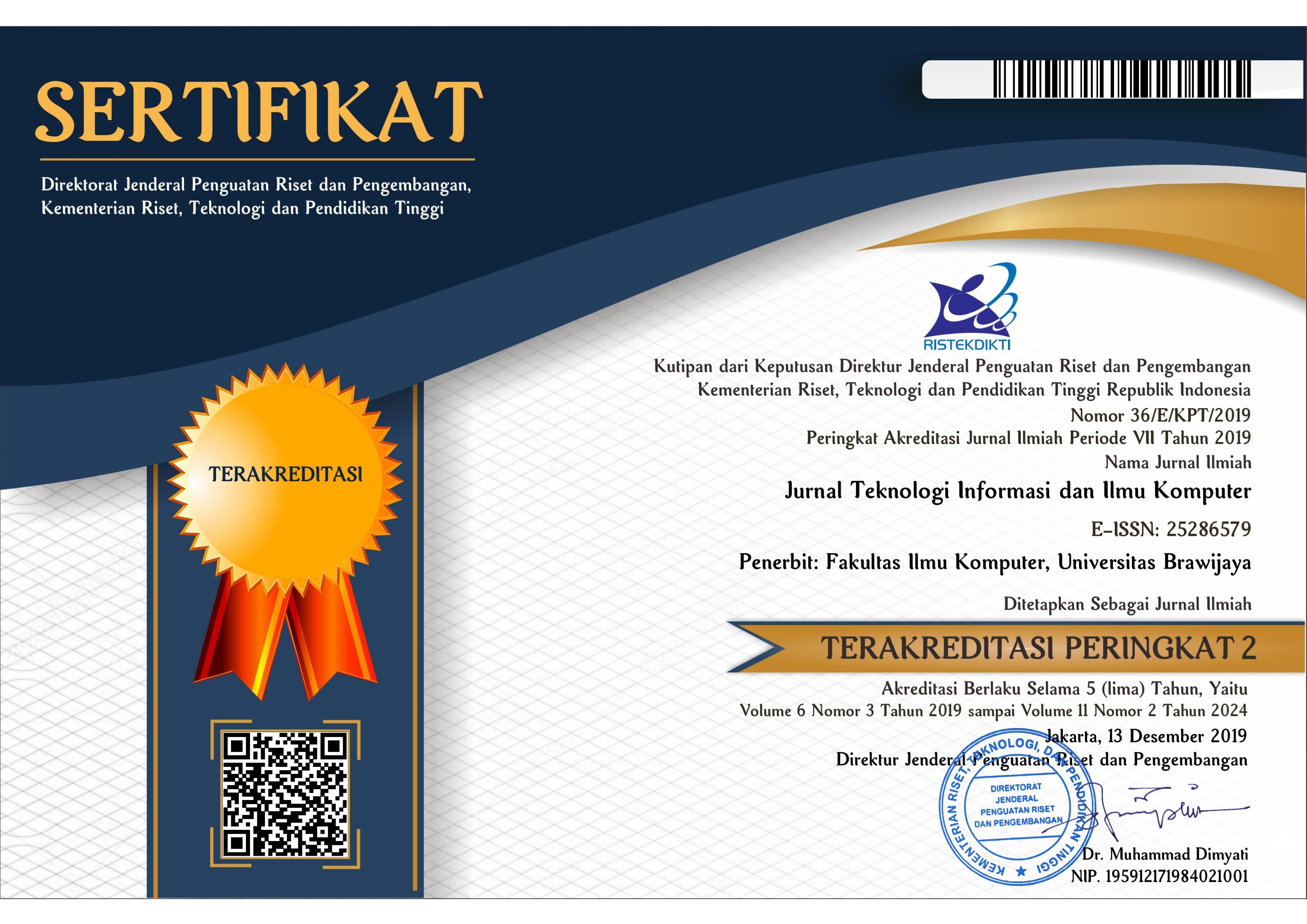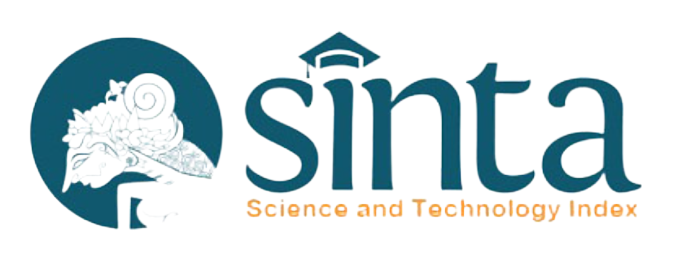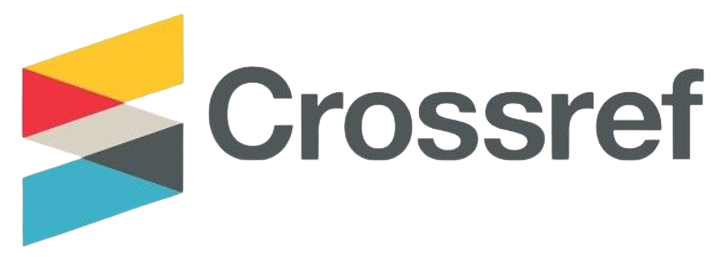Pengontrolan Lampu Lalu Lintas Menggunakan Teknologi Deteksi Kendaraan YOLOV4
DOI:
https://doi.org/10.25126/jtiik.2025125Kata Kunci:
Deteksi, Kendaraan, YOLOv4, Pengontrolan, Lampu Lalu LintasAbstrak
Deteksi kendaraan adalah aspek kunci dalam pengontrolan lalu lintas yang efisien. Kemacetan lalu lintas bisa terjadi salah satunya akibat pengaturan durasi lampu lalu lintas yang tidak disesuaikan dengan volume kendaraan pada saat itu. Penelitian ini bertujuan mengembangkan sistem pengontorlan lampu lalu lintas adaptif yang menyesuaikan durasi lampu berdasarkan volume kendaraan yang terdeteksi menggunakan YOLOv4, yang dapat mengatasi kekurangan pada sistem pengontrolan lalu lintas konvensional dan mengurangi kemacetan serta meningkatkan efisiensi lalu lintas. Tahapan penelitian dimulai dengan mengumpulkan data video lalu lintas dari CCTV (Closed Circuit Television) yang dipasang di berbagai lokasi strategis untuk mendapatkan gambaran lengkap tentang kondisi lalu lintas. Data tersebut kemudian dianalisis menggunakan algoritma YOLOv4 (You Only Look Once v4) untuk mendeteksi kendaraan secara real-time. YOLOv4 dipilih karena keunggulannya dalam efisiensi dan akurasi deteksi kendaraan secara real-time. Setelah data deteksi kendaraan terkumpul, data tersebut diintegrasikan dengan sistem lampu lalu lintas. Algoritma ini dirancang untuk mengintegrasikan data deteksi kendaraan secara real-time dan menyesuaikan durasi lampu lalu lintas berdasarkan jumlah kendaraan. Selanjutnya simulasi sistem menggunakan library pygame dilakukan untuk mengevaluasi kinerja algoritma di berbagai kondisi lalu lintas. Hasil penelitian menunjukkan bahwa penggunaan YOLOv4 dalam sistem pengontrolan lampu lalu lintas adaptif secara signifikan mengurangi kemacetan. Model YOLOv4 menunjukkan akurasi rata-rata tertinggi sebesar 78% dalam deteksi kendaraan di jalan kedua dengan kualitas video yang cukup baik. Penggunaan YOLOv4 dalam pengontrolan lampu lalu lintas menunjukkan peningkatan efisiensi dan responsivitas terhadap tingkat kepadatan lalu lintas sedang, dengan pengurangan durasi lampu hijau berkisar antara 53% hingga 86%.
Abstract
Vehicle detection is a key aspect of efficient traffic control. Traffic congestion can occur, in part, due to traffic light duration settings that are not adjusted according to the volume of vehicles at a given time. This study develops an adaptive traffic light control system that adjusts the duration of the lights based on the detected vehicle volume, aiming to address the shortcomings of conventional traffic control systems and reduce congestion while improving traffic efficiency.The research began with collecting traffic video data from CCTV (Closed Circuit Television) installed at various strategic locations to get a comprehensive overview of traffic conditions. The data was then analyzed using the YOLOv4 (You Only Look Once v4) algorithm for real-time vehicle detection. YOLOv4 was chosen for its advantages in efficiency and accuracy in real-time vehicle detection. Once the vehicle detection data was collected, it was integrated with the traffic light system. The algorithm was designed to integrate real-time vehicle detection data and adjust the traffic light duration based on the number of vehicles. A simulation of the system was then conducted using the Pygame library to evaluate the algorithm's performance under various traffic conditions. The study results showed that the use of YOLOv4 in adaptive traffic light control systems significantly reduced congestion. The YOLOv4 model demonstrated the highest average accuracy of 78.93% in vehicle detection on the second road with fairly good video quality. The use of YOLOv4 in traffic light control showed increased efficiency and responsiveness to moderate traffic density, with a reduction in green light duration ranging from 53% to 86%.
Downloads
Referensi
ANINGTIYAS, P.R, SUMIN, A, WIRAWAN, S., 2020. Pembuatan Aplikasi Deteksi Objek Menggunakan TensorFlow Object Detection API dengan Memanfaatkan SSD MobileNet V2 Sebagai Model Pra - Terlatih. Jurnal Ilmiah Komputasi, 19(3), pp.421–430.
BOCHKOVSKIY, A., WANG, C.-Y. and LIAO, H.-Y.M., 2020. YOLOv4: Optimal Speed and Accuracy of Object Detection. [online] (May). Available at: <http://arxiv.org/abs/2004.10934> [Diakses 28 Juli 2024].
CHAUHAN, M.S., SINGH, A., KHEMKA, M., PRATEEK, A. and SEN, R., 2019. Embedded CNN based vehicle classification and counting in non-laned road traffic. ACM International Conference Proceeding Series, (January).
GANDHI, M.M., SOLANKI, D.S., DAPTARDAR, R.S. & BALOORKAR, N.S., 2020. Smart Control of Traffic Light Using Artificial Intelligence. 2020 5th IEEE International Conference on Recent Advances and Innovations in Engineering, ICRAIE 2020 - Proceeding, 2020.
HADI, M.I., SILALAHI, D.K. & WIBAWA, P.D., 2022. Pengaturan Lampu Lalu Lintas Berdasarkan Deteksi Volume Kendaraan Menggunakan Metode Yolov3 Traffic Light Setting Based On Vehicle Volume Detection Using The Yolov3 Method. e-Proceeding of Engineering, [online] 9(5), pp.2133–2144. Available at: <https://openlibrarypublications.telkomuniversity.ac.id/index.php/engineering/article/view/18470> [Diakses 31 Juli 2024].
ISSA, R. BIN, DAS, M., RAHMAN, M.S., BARUA, M., RHAMAN, M.K., RIPON, K.S.N. & ALAM, M.G.R., 2021. Double deep Q-learning and faster R-CNN-based autonomous vehicle navigation and obstacle avoidance in dynamic environment. Sensors, 21(4), pp.1–24.
MAHTO, P., GARG, P., SETH, P. & PANDA, J., 2020. Refining Yolov4 for vehicle detection. International Journal of Advanced Research in Engineering and Technology, 11(5), pp.409–419.
MISRA, D., 2020. Mish: A Self Regularized Non-Monotonic Activation Function. 31st British Machine Vision Conference, BMVC 2020.
PRATHAP, B.R., KUMAR, K.P., CHOWDARY, C.R. & HUSSAIN, J., 2022. AI-Based Yolo V4 Intelligent Traffic Light Control System. Journal of Automation, Mobile Robotics and Intelligent Systems, 16(4), pp.53–61.
SAHAL, M., HIDAYAT, Z., BILFAQIH, Y., HADY, M.A. & TAMPUBOLON, Y.M.H., 2023. Smart Traffic Light Using YOLO Based Camera with Deep Reinforcement Learning Algorithm. JAREE (Journal on Advanced Research in Electrical Engineering), 7(1), pp.13–19.
SHUBHO, F.H., IFTEKHAR, F., HOSSAIN, E. & SIDDIQUE, S., 2021. Real-Time traffic monitoring and traffic offense detection using YOLOv4 and OpenCV DNN. IEEE Region 10 Annual International Conference, Proceedings/TENCON, 2021-Decem(February 2022), pp.46–51.
TRAN, T.H.P. & JEON, J.W., 2020. Accurate Real-Time Traffic Light Detection Using YOLOv4. 2020 IEEE International Conference on Consumer Electronics - Asia, ICCE-Asia 2020, pp.2–5.
WANG, P., XIAO, J., KAWAGUCHI, K. & WANG, L., 2022a. Automatic Ceiling Damage Detection in Large-Span Structures Based on Computer Vision and Deep Learning. Sustainability (Switzerland), 14(6), pp.1–24.
WANG, Q., ZHANG, Q., LIANG, X., WANG, Y., ZHOU, C. & MIKULOVICH, V.I., 2022b. Traffic lights detection and recognition method based on the improved yolov4 algorithm. Sensors, 22(1), pp.1–20.
WANG, R., WANG, Z., XU, Z., WANG, C., LI, Q., ZHANG, Y. & Li, H., 2021. A Real-Time Object Detector for Autonomous Vehicles Based on YOLOv4. Computational Intelligence and Neuroscience, 2021.
YAO, Z., CAO, Y., ZHENG, S., HUANG, G. & LIN, S., 2021. Cross-iteration batch normalization. Proceedings of the IEEE Computer Society Conference on Computer Vision and Pattern Recognition, pp.12326–12335.
ZHENG, Z., WANG, P., LIU, W., LI, J., YE, R.& REN, D., 2020. Distance-IoU loss: Faster and better learning for bounding box regression. AAAI 2020 - 34th AAAI Conference on Artificial Intelligence, (2), pp.12993–13000.
ZOU, Z., CHEN, K., SHI, Z., GUO, Y. & YE, J., 2023. Object Detection in 20 Years: A Survey. Proceedings of the IEEE, 111(3), pp.257–276.
Unduhan
Diterbitkan
Terbitan
Bagian
Lisensi
Hak Cipta (c) 2025 Jurnal Teknologi Informasi dan Ilmu Komputer

Artikel ini berlisensiCreative Commons Attribution-ShareAlike 4.0 International License.

Artikel ini berlisensi Creative Common Attribution-ShareAlike 4.0 International (CC BY-SA 4.0)
Penulis yang menerbitkan di jurnal ini menyetujui ketentuan berikut:
- Penulis menyimpan hak cipta dan memberikan jurnal hak penerbitan pertama naskah secara simultan dengan lisensi di bawah Creative Common Attribution-ShareAlike 4.0 International (CC BY-SA 4.0) yang mengizinkan orang lain untuk berbagi pekerjaan dengan sebuah pernyataan kepenulisan pekerjaan dan penerbitan awal di jurnal ini.
- Penulis bisa memasukkan ke dalam penyusunan kontraktual tambahan terpisah untuk distribusi non ekslusif versi kaya terbitan jurnal (contoh: mempostingnya ke repositori institusional atau menerbitkannya dalam sebuah buku), dengan pengakuan penerbitan awalnya di jurnal ini.
- Penulis diizinkan dan didorong untuk mem-posting karya mereka online (contoh: di repositori institusional atau di website mereka) sebelum dan selama proses penyerahan, karena dapat mengarahkan ke pertukaran produktif, seperti halnya sitiran yang lebih awal dan lebih hebat dari karya yang diterbitkan. (Lihat Efek Akses Terbuka).














